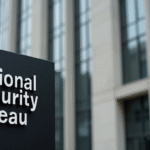Growth and Current Status of Mexico’s Investment Funds
At the fifth edition of the Funds Forum, messages from both regulators and asset managers were exchanged. Both parties acknowledge the impressive growth in the number of accounts and the amount of assets managed by investment funds in Mexico.
These funds have grown from 1.9 billion pesos a decade ago to 4.6 billion pesos in April 2025, according to official data from the National Banking and Securities Commission (CNBV), headed by Jesús de la Fuente.
Despite assets under administration now representing 13% of Mexico’s Gross Domestic Product (GDP), there is still much to achieve, as similar economies have investor numbers equal to their total population and asset administration reaching 100% of their GDP, as per AMIB data.
Common Goals and Necessary Regulatory Improvements
Regulators and regulated parties agree on increasing market participation and driving investments that benefit investors, ultimately strengthening listed companies. However, to reach Mexico’s potential, the industry requires regulations aligned with global standards.
Key areas for improvement, according to AMIB’s president Alvaro García Pimentel, include the ability to export investment funds, more flexibility in updating and registering prospectuses, adapting the securities lending scheme, and issuing hedge fund regulations in line with international practices.
“This would further strengthen Mexico’s investment and financing scheme,” stated the AMIB president, emphasizing that investment funds are 100% aligned with Plan México.
AMIB’s figures reveal that in the past five years, the number of customers in investment funds has increased by over 400%, from 3 million to 13.1 million investors.
Calls for Fiscal Regime Modernization
Alejandro Aguilar Ceballos, president of AMIB’s Asset Management Committee, highlighted the importance of modernizing the tax regime for the stock market.
He stressed the need to harmonize the distribution of investment funds with other financial assets and modernize both the funds’ tax regime and certain market operations, such as reports, securities lending, and derivatives.
Moreover, harmonizing the distribution of investment funds with other financial assets in the country and international best practices is essential.
Aguilar Ceballos also emphasized the need to promote investment fund commercialization abroad, which would require operational changes.
Regulatory Initiatives and Transparency
CNBV Governor Victoria Rodríguez Ceja stressed the necessity of achieving better returns without increasing risks.
CNBV President De la Fuente mentioned the need to increase investor participation in the securities market to channel more resources to listed companies.
He also noted that the regulator continues reviewing secondary regulations of the Securities Market Law to strengthen it and encourage greater financial inclusion and education.
CNBV Vice President for Regulatory Policy, Lucía Buenrostro Sanchez, announced the preparation of regulations to verify that assets classified as ESG genuinely meet those criteria.
She explained that the aim is to provide more transparency and trust for investors, with ESG-classified assets or having a blackboard ESG key needing to prove that at least 80% of the asset complies with environmental, social, and governance criteria.
Key Questions and Answers
- What is the current status of Mexico’s investment funds industry? The industry has grown significantly, with assets under administration reaching 4.6 billion pesos in April 2025, up from 1.9 billion pesos a decade ago.
- Why is regulatory alignment with global standards necessary? To unlock the industry’s full potential and enable exportation of investment funds, along with increased flexibility in updating prospectuses and adapting securities lending schemes.
- What are the key areas for regulatory improvement? Modernizing the tax regime, harmonizing distribution with other financial assets, and aligning hedge fund regulations with international practices.
- What are the CNBV’s initiatives to enhance transparency? Verification of ESG asset classification and strengthening secondary regulations of the Securities Market Law to encourage financial inclusion and education.






